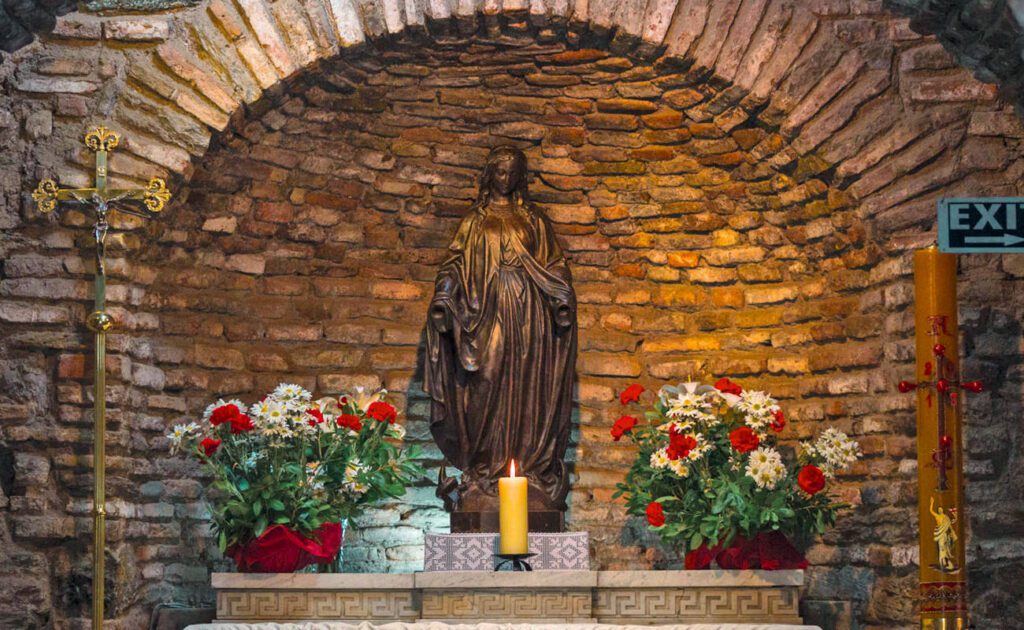
Virgin Mary
Virgin Mary, also known as the Blessed Virgin Mary or simply Mary, holds a central and revered position in Christian theology and devotion. Her significance transcends denominational boundaries, with both Catholics and Orthodox Christians, as well as many Protestant denominations, acknowledging her special role in the story of Jesus Christ. In this narrative, we explore the life, significance, and enduring devotion to the Virgin Mary.
Mary’s life is primarily known through the New Testament, where she is portrayed as the mother of Jesus Christ. According to the Gospels of Matthew and Luke, Mary was a young Jewish woman from the town of Nazareth in Galilee. She was betrothed to Joseph, a carpenter, when the angel Gabriel appeared to her with a divine message. Gabriel announced that she would conceive and give birth to a son, who would be the Son of God and named Jesus. This event, known as the Annunciation, is a pivotal moment in Christian tradition.
Mary’s unwavering faith and humble acceptance of her divine calling are exemplified in her response to the angel: “Behold, I am the servant of the Lord; let it be to me according to your word” (Luke 1:38). Her willingness to fulfill God’s plan played a crucial role in the incarnation of Jesus, the central event in Christian belief.
Mary’s journey continued with her visitation to her cousin Elizabeth, who was also miraculously expecting a child, John the Baptist. Mary’s visit prompted Elizabeth to proclaim her as “blessed among women,” and Mary responded with the Magnificat, a song of praise and gratitude to God.
The nativity of Jesus in Bethlehem, where Mary and Joseph found refuge in a stable, marks the birth of the Messiah. The Gospel narratives emphasize Mary’s role as the nurturing mother of Jesus, who raised Him with love and devotion.
Throughout Jesus’ ministry, Mary appears intermittently in the Gospels. She was present at the wedding at Cana, where Jesus performed His first miracle, turning water into wine. Her maternal concern for her son is seen when she and her relatives sought to speak with Him during His teaching.
Mary’s most profound moment in the Gospels occurs at the crucifixion of Jesus. Standing at the foot of the cross, she witnessed her son’s suffering and death. In this moment of profound sorrow, Jesus entrusted her to the care of the apostle John, symbolizing her maternal role in the spiritual life of believers. This event is commemorated in the Christian devotion known as the “Seven Sorrows of Mary.”
Following the resurrection and ascension of Jesus, Mary is believed to have lived a quiet and devout life. Traditionally, she is thought to have spent her later years in Ephesus, Turkey, where a shrine known as the House of the Virgin Mary now stands as a place of pilgrimage.
The veneration of the Virgin Mary is deeply rooted in Christian tradition. She is often referred to as the “Mother of God” (Theotokos in Greek) in Orthodox Christianity, highlighting her role in the Incarnation. Marian devotion includes prayers such as the Hail Mary and devotional practices like the Rosary.
In Catholicism, Mary is believed to have been sinless from birth (the doctrine of the Immaculate Conception) and assumed bodily into heaven at the end of her earthly life (the Assumption of Mary). She is considered the “Queen of Heaven” and holds a special place in the hearts of Catholics worldwide.
Virgin Mary’s enduring significance in Christian theology and devotion serves as a symbol of maternal love, faith, and humility. Her life and example continue to inspire millions of believers to seek her intercession, guidance, and the profound grace that her presence represents in the Christian faith.
